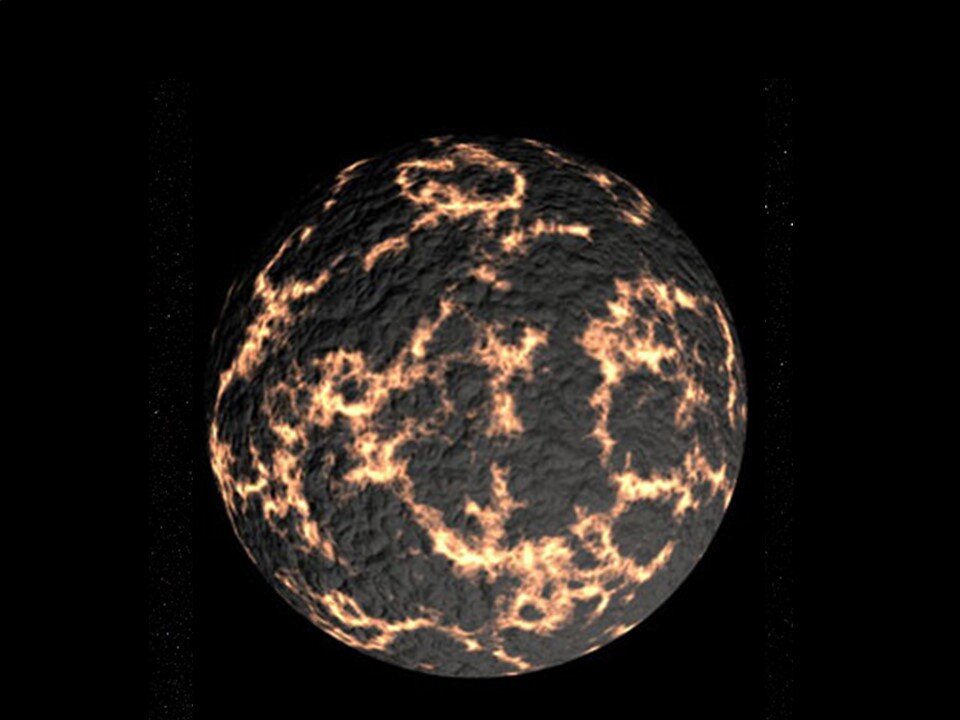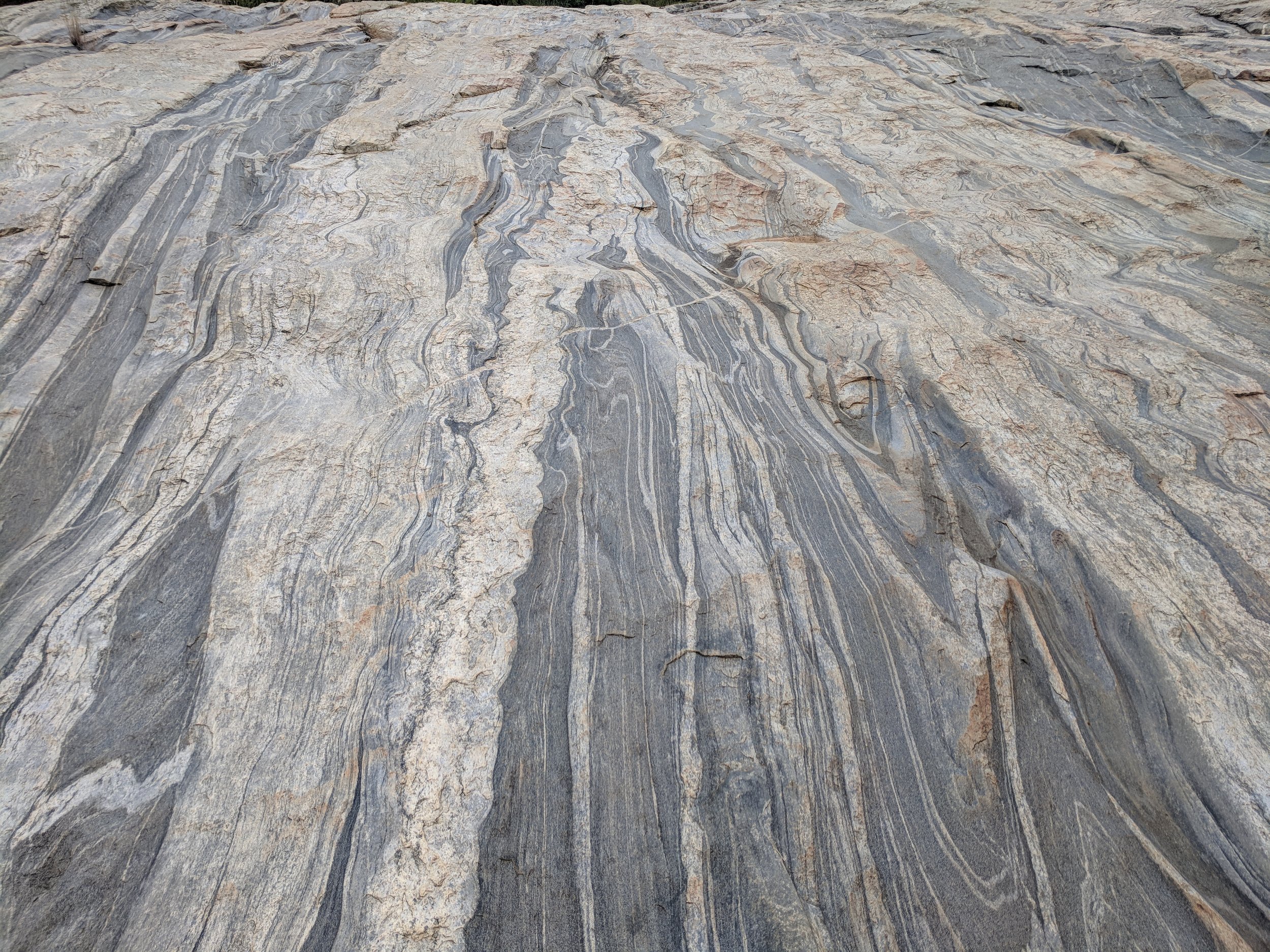Peter Cawood on When Plate Tectonics Started
Peter Cawood is a Professor in the School of Earth, Atmosphere, and Environment at Monash University. He studies the origin and growth of the Earth’s continents, especially the ancient cores of continents called cratons. These hold clues as to how and when plate tectonics started. In the podcast he explains how we can examine many aspects of the geological record to look for signs that plate tectonics was operating. Using inference from five main proxies of plate tectonics, he presents compelling evidence that plate tectonics goes back as far as the Archean.
Listen to the podcast here or wherever you listen to podcasts.
Scroll down for illustrations that support the podcast. And add your comments at the bottom of the page.
Note - playing the podcast is not supported on Internet Explorer; please use any other browser, or listen on Spotify, Apple Podcasts, etc.
Podcast Illustrations
All illustrations courtesy of Peter Cawood unless otherwise indicated.
Estimates of the various researchers as to when plate tectonics started vary hugely from as early as over 4.2 billion years ago in the Hadean to as recently as about 850 million years in the Neoproterozoic.
Korenaga (2013), Annual Reviews of Earth and Planetary Science 41, 117
Artist’s impression of the Earth 4.55 billion years ago
After the cooling of an initial magma ocean, a layer of partially solidified crust is thought to have covered the Earth. Heat traveled through this layer, referred to as a stagnant lid, by localized magmatism. Eventually the lid became sufficiently hot to suffer a catastrophic overturn. This process then repeated itself until the Earth had cooled by several hundred degrees when it transitioned to plate tectonics.
Simplified Models of the Various Modes of Cooling of the Earth
Summary of the different modes of cooling of the Earth. (A) In the Hadean, there is localized melting of the lithosphere (dark and light green), which emplaces the granitoids and greenstones seen in ancient cratons. (B) In the Archean, the lithosphere may have formed coherent, rigid sections akin to the lithospheric plates of today, but they did not form a global network, and they did not subduct. (C) Plate tectonics on the modern Earth, in which the lithosphere includes thick continental plates and a thin oceanic lithosphere that subducts when it cools and sinks.
Capitanio et al. (2019), Earth and Planetary Science Letters, 525
Plate tectonics requires certain conditions of lithospheric strength and density to be possible. The arrows between “Plate Tectonics” and the intermediate stagnant lid stages referred to as “Drips & Plumes” and “Delamination and Upwellings” indicate that changes in the tectonic regime of a silicate planet between the two types of stagnant lid and plate tectonics are possible, but that transitions back and forth from “Heat Pipe” and “Terminal Stagnant Lid” are not expected.
Stern (2016), Geoscience Frontiers 7, 573
Diagram of the three cooling modes: pre-plate tectonics, transition phase, and plate tectonics. (A) Pre-plate tectonics: Small wavelength convection in the mantle causes the lithosphere to form drips down into the asthenosphere, while blobs of melt rise and emplace granitic rocks — tonalites, trondhjemites and granodiorites (TTG). (B) Transition phase: Localized subduction causes fluid flux melting, which generates magmas with modern-day chemical composition, and portions of the lithosphere become thickened. (C) Plate tectonics: Subduction becomes sustained, the plates form a single global network, and thick, stable continental lithosphere is formed.
Cawood et al. (2018), Philosophical Transactions of the Royal Society A: Mathematical, Physical and Engineering Sciences, v. 376
Modern-day plate tectonics requires a globally linked system of plates. It is possible that some of the evidence of the very earliest subduction zones, such as those in Western Greenland and Arctic Canada, reflect localized plate-like behavior without a globally linked network.
Cawood et al. (2018) Philosophical Transactions of the Royal Society A: Mathematical, Physical and Engineering Sciences, v. 376
Magmatic Activity Before Plate Tectonics
As Peter Cawood mentions in the podcast, the felsic (i.e., silica-rich) rock record shows pulses of magmatic activity that emplaced the so-called tonalite-trondhjemite-granodiorite (TTG) rocks, which are types of granite, into the cratons before the magmatic patterns characteristic of plate tectonics emerged. The picture shows complex cross-cutting relationships in a TTG outcrop in the Kaapvaal Craton in southern Africa.
Evidence of Rigid Plates - Dykes
The occurrence of dykes along large-scale brittle fractures is strong evidence for rigid plates, which is one of the requirements for plate tectonics. One of the most striking of these dykes is the Zimbabwe dyke, which is 550 km long and 4-11 km wide and is clearly visible from space. It was emplaced 2.57 billion years ago.
The Yilgarn craton in southwest Australia contains swarms of dykes that fractured the craton 2.4 billion years ago.
Possible correlation of dyke swarms across cratons indicate brittle fracturing of rigid plates in the late Archean, which may be related to the breakup of the first supercontinents.
Söderlund et al. (2010), Precambrian Research, v. 183, 388
Sedimentary Basins
The presence of large expanses of thick sedimentary successions in sedimentary basins is evidence for a rigid lithosphere since mechanical strength is needed to support such a weight of rock. The base of the Fortescue Group in Western Australia, which Peter Cawood mentions in the podcast, has been dated as being 2.7 billion years old.
Types of Sedimentary Basin
(a) The edge of continent that is formed when it rifts is called a passive margin. The margin forms in a two-stage process. Initial stretching of the continent results in faulting and produces a rift basin. Eventually the extending continent is broken into two parts separated by oceanic crust forming at a mid-ocean ridge. As the continents drift apart, they cool and subside, forming a passive margin. Sediments accumulate during both phases of margin formation, forming thick sedimentary successions.
(b) Where two continents collide, the loading of the over-riding plate on top of the down-going plate depresses the surface, forming a region known as a foreland basin. Sediments accumulate in these basins.
The different types of sedimentary basin in the geological record are taken as evidence of lateral motion of rigid plates undergoing extension and rifting on the one hand, and collision on the other.
The Metamorphic Record
The graph shows the incidence of the three different kinds of metamorphism discussed in the podcast: high-temperature/low-pressure characteristic of mantle plumes and volcanic back-arc settings (red dots), intermediate-pressure and temperature characteristic of converging plates (green dots), and low-temperature/high-pressure characteristic of subduction zones (blue dots). The latter kind only becomes common in the record in the Neoproterozoic (NP). Since low-temperature/high-pressure metamorphism is characteristic of the metamorphism experienced by cold slabs of oceanic crust subducting intact deep into the lithosphere before returning to the surface, some workers have taken this as evidence that plate tectonics only started as late as the Neoproterozoic.
Brown et al. (2018), American Mineralogist, 103, 181
Paleomagnetism
Paleomagnetic studies have shown convincing evidence that the Superior, Kaapvaal, and Kola-Karelia cratons moved with respect to each other around 2,700 to 2,440 million years ago, and the Kaapvaal craton moved with respect to the Pilbara craton at about the same time.
Cawood et al. (2018), Philosophical Transactions of the Royal Society A: Mathematical, Physical and Engineering Sciences, v. 376
Numerical Modelling
Mantle Temperature = 1,550 °C (right)
Numerical models suggest that when the mantle is about 200 degrees hotter than it is today, lithosphere sinking into the mantle at a subduction zone heats up and breaks apart before it gets very far.
Mantle Temperature = 1,350 °C (left)
When the mantle cools to its present-day temperature, the subducting slab takes longer to heat up and is able to remain intact as it sinks down to the mantle transition zones at depths of 400 km and 600 km. Such subducting slabs become denser as they sink, and their increasing negative buoyancy causes “slab pull,” which is thought to be the major driver of plate motions.
Moyen & van Hunen (2012), Geology, 40, 451
















